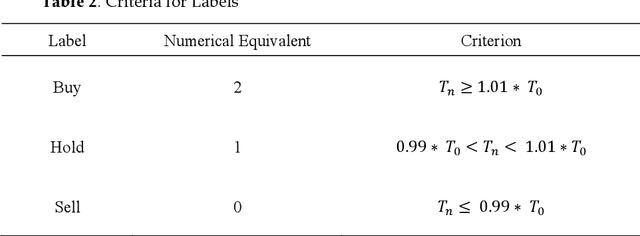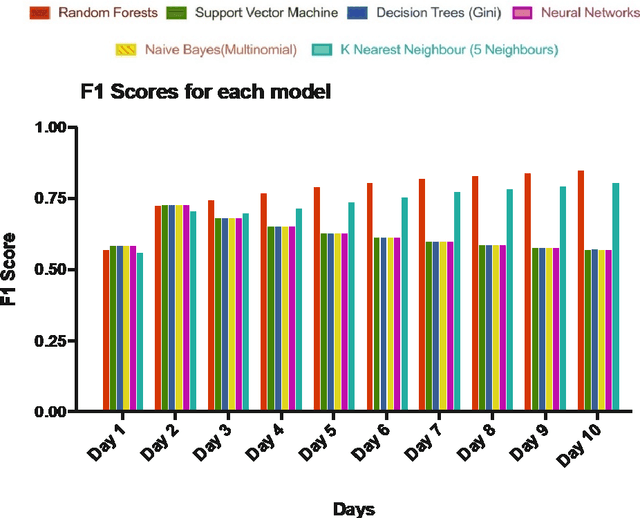Feature Learning for Stock Price Prediction Shows a Significant Role of Analyst Rating
Paper and Code
Mar 13, 2021



To reject the Efficient Market Hypothesis a set of 5 technical indicators and 23 fundamental indicators was identified to establish the possibility of generating excess returns on the stock market. Leveraging these data points and various classification machine learning models, trading data of the 505 equities on the US S&P500 over the past 20 years was analysed to develop a classifier effective for our cause. From any given day, we were able to predict the direction of change in price by 1% up to 10 days in the future. The predictions had an overall accuracy of 83.62% with a precision of 85% for buy signals and a recall of 100% for sell signals. Moreover, we grouped equities by their sector and repeated the experiment to see if grouping similar assets together positively effected the results but concluded that it showed no significant improvements in the performance rejecting the idea of sector-based analysis. Also, using feature ranking we could identify an even smaller set of 6 indicators while maintaining similar accuracies as that from the original 28 features and also uncovered the importance of buy, hold and sell analyst ratings as they came out to be the top contributors in the model. Finally, to evaluate the effectiveness of the classifier in real-life situations, it was backtested on FAANG equities using a modest trading strategy where it generated high returns of above 60% over the term of the testing dataset. In conclusion, our proposed methodology with the combination of purposefully picked features shows an improvement over the previous studies, and our model predicts the direction of 1% price changes on the 10th day with high confidence and with enough buffer to even build a robotic trading system.
 Add to Chrome
Add to Chrome Add to Firefox
Add to Firefox Add to Edge
Add to Edge